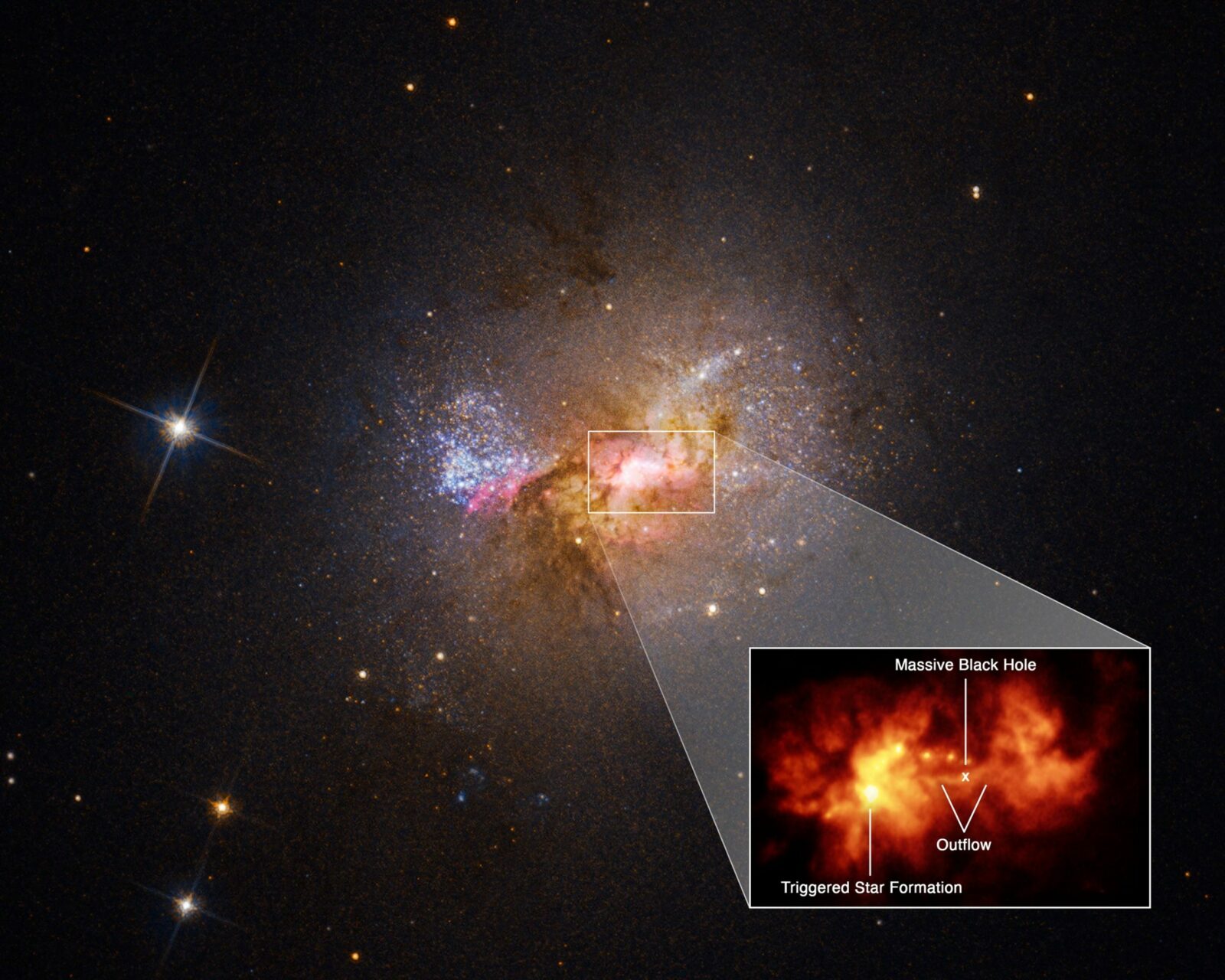Black holes, often depicted as the deadly creatures of cosmos, ripping apart stars, devouring everything that gets too near, and trapping light, are now taking on a less evil role in the newest Hubble Space Telescope study.
Detailed data from NASA’s Hubble Space Telescope reveals a black hole in a different light: it promotes, rather than limits, star creation.
Hubble imagery and spectroscopy of the dwarf starburst galaxy Henize 2-10 reveal a gas outflow running like an umbilical cord from the black hole to a bright star birth area, prompting the already dense cloud to produce star clusters.
Controversial Matter
This tiny galaxy sparked a decade-long discussion among astronomers over whether dwarf galaxies had black holes equal to the supermassive giants observed in the centers of bigger galaxies.
Further research into dwarf galaxies, which have stayed tiny throughout cosmic time, may explain how the initial seeds of supermassive black holes developed and grew over the universe’s existence.
Little Henize 2-10, which has one-tenth the amount of stars contained in our Milky Way, is set to play a significant role in resolving the enigma of where supermassive black holes originated in the first place.
Amy Reines, the lead scientist on the new Hubble findings, which were published in the January 19 edition of Nature, stated:
“Ten years ago, as a graduate student thinking I would spend my career on star formation, I looked at the data from Henize 2-10, and everything changed.. From the beginning, I knew something unusual and special was happening in Henize 2-10, and now Hubble has provided a very clear picture of the connection between the black hole and a neighboring star-forming region located 230 light-years from the black hole.”

Blackhole star formation is the opposite effect found in bigger galaxies. Matter falling toward the black hole is swept away by nearby magnetic fields, generating fiery jets of plasma flying at near-light speed.
Gas clouds trapped in the path of the jets would be heated far beyond their capacity to cool and create stars.
However, with the less-massive black hole in Henize 2-10 and its softer ejection, gas was squeezed just enough to initiate the birth of new stars.
Reines hypothesized that the unique radio and X-ray emissions in Henize 2-10 were caused by a giant black hole but not as enormous as those detected in more giant galaxies. The black hole in Henize 2-10 has a mass of around 1 million solar masses. Black holes in bigger galaxies may be more than a billion times the mass of our Sun.
The core black hole grows in size as the host galaxy grows in size.
On the other hand, other scientists believed that the light was most likely being released by a supernova remnant, which would be a frequent thing in a galaxy that constantly produces massive stars that explode.
Dwarf galaxies, such as Henize 2-10, provide interesting perspective clues since they have stayed tiny across cosmic time, rather than growing and merging like giant galaxies like the Milky Way.
Astronomers believe that dwarf galaxy black holes might be analogs for black holes in the early universe when they were just forming and growing.













Leave a Reply